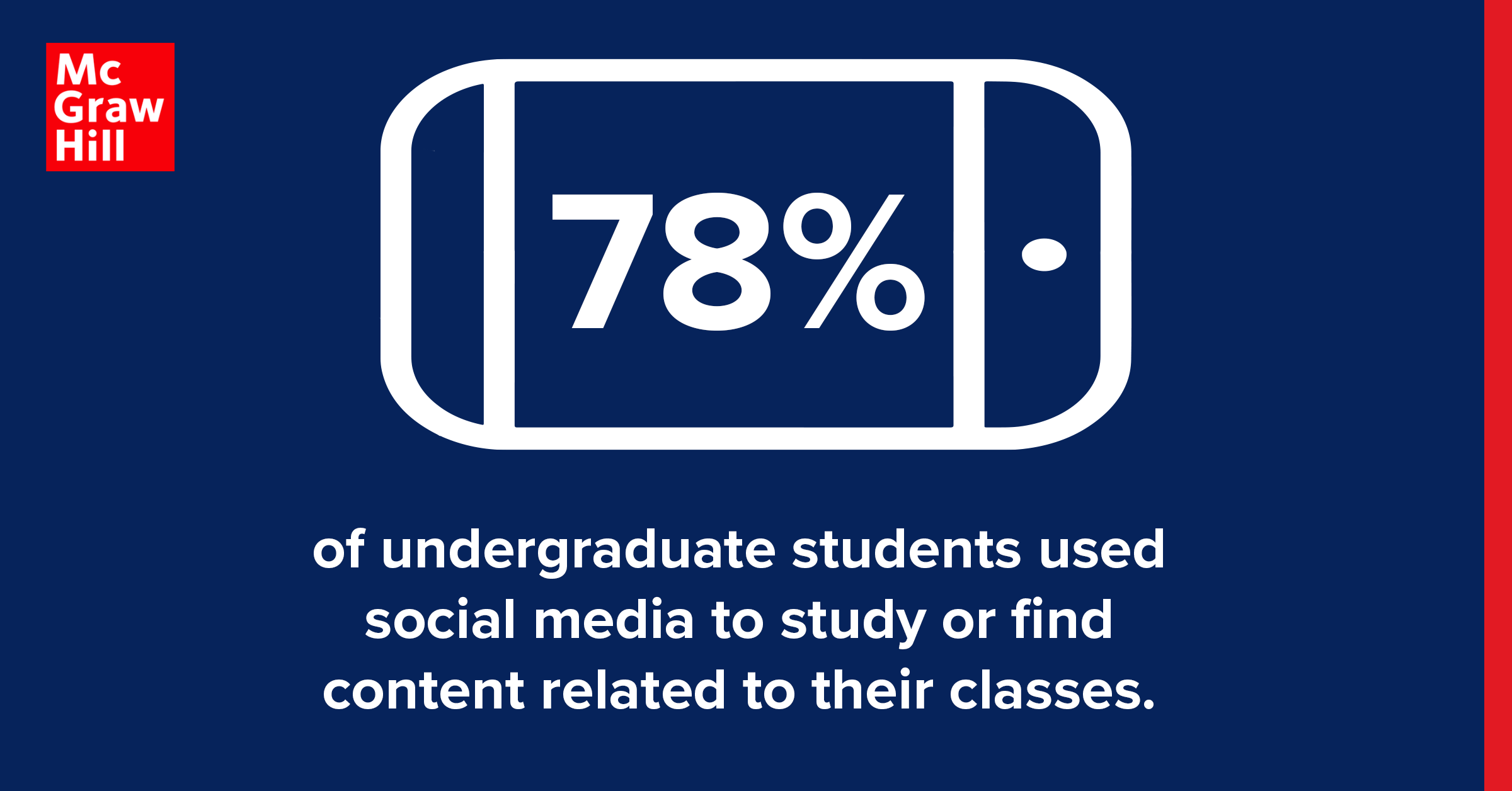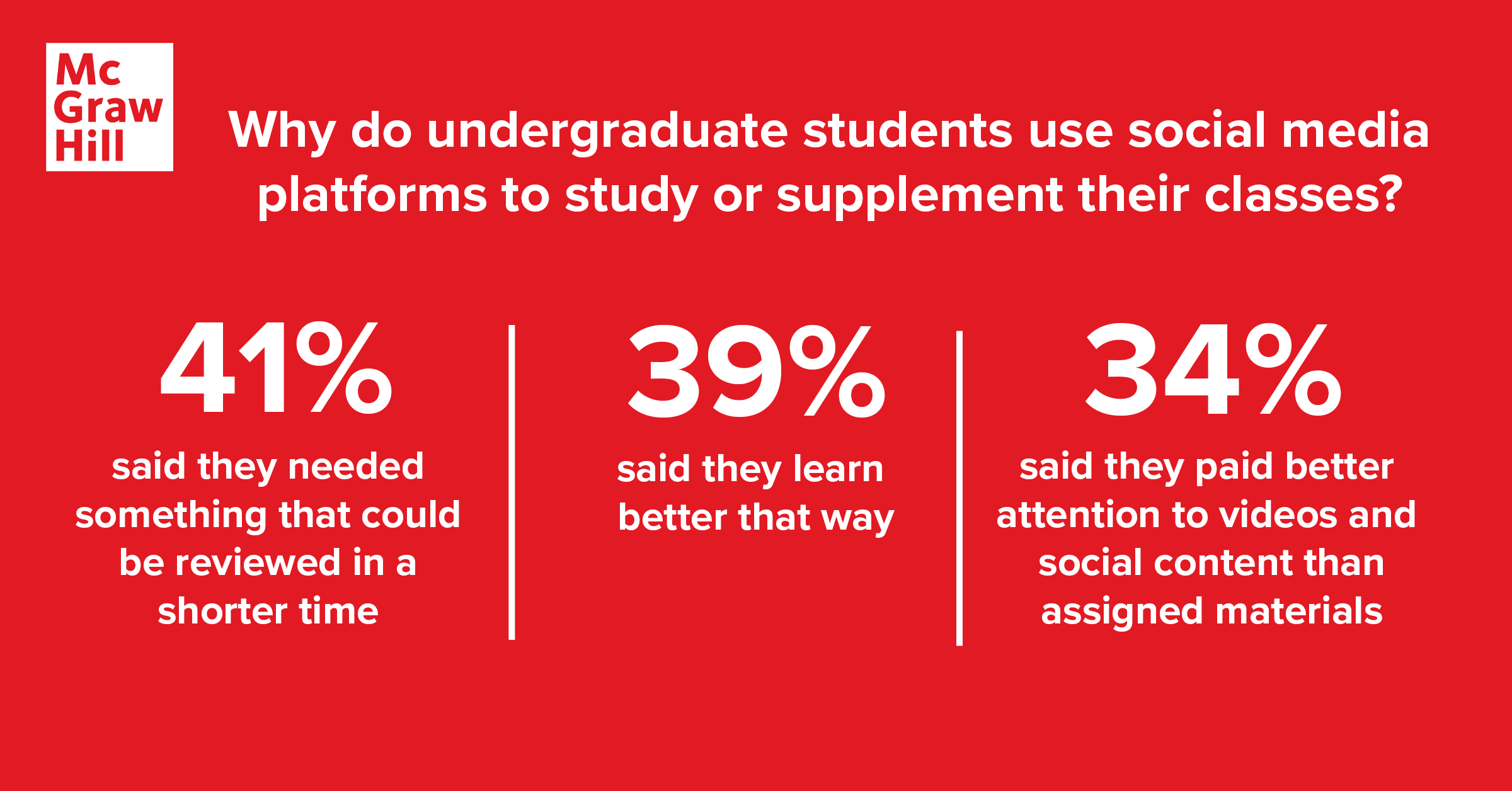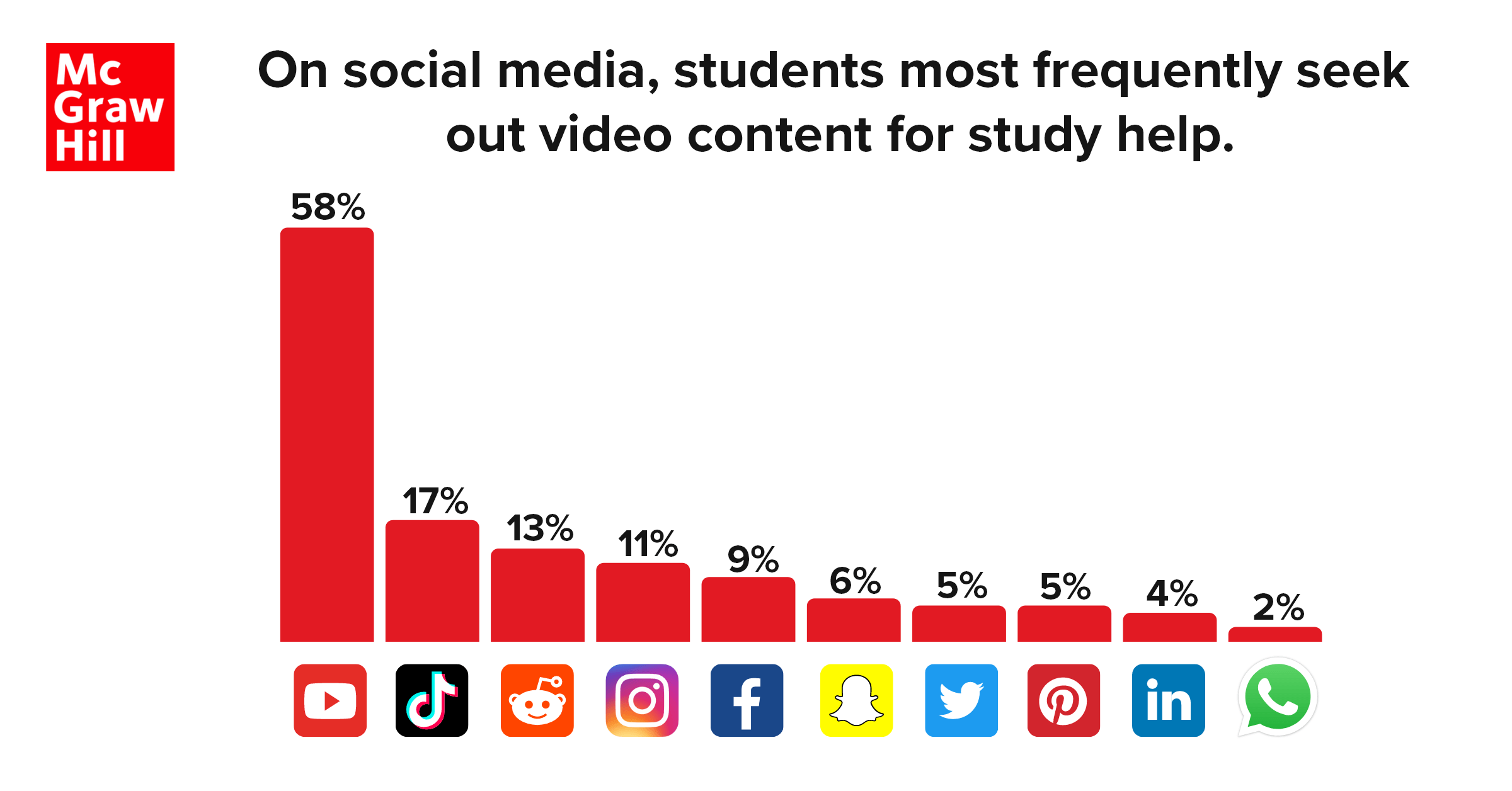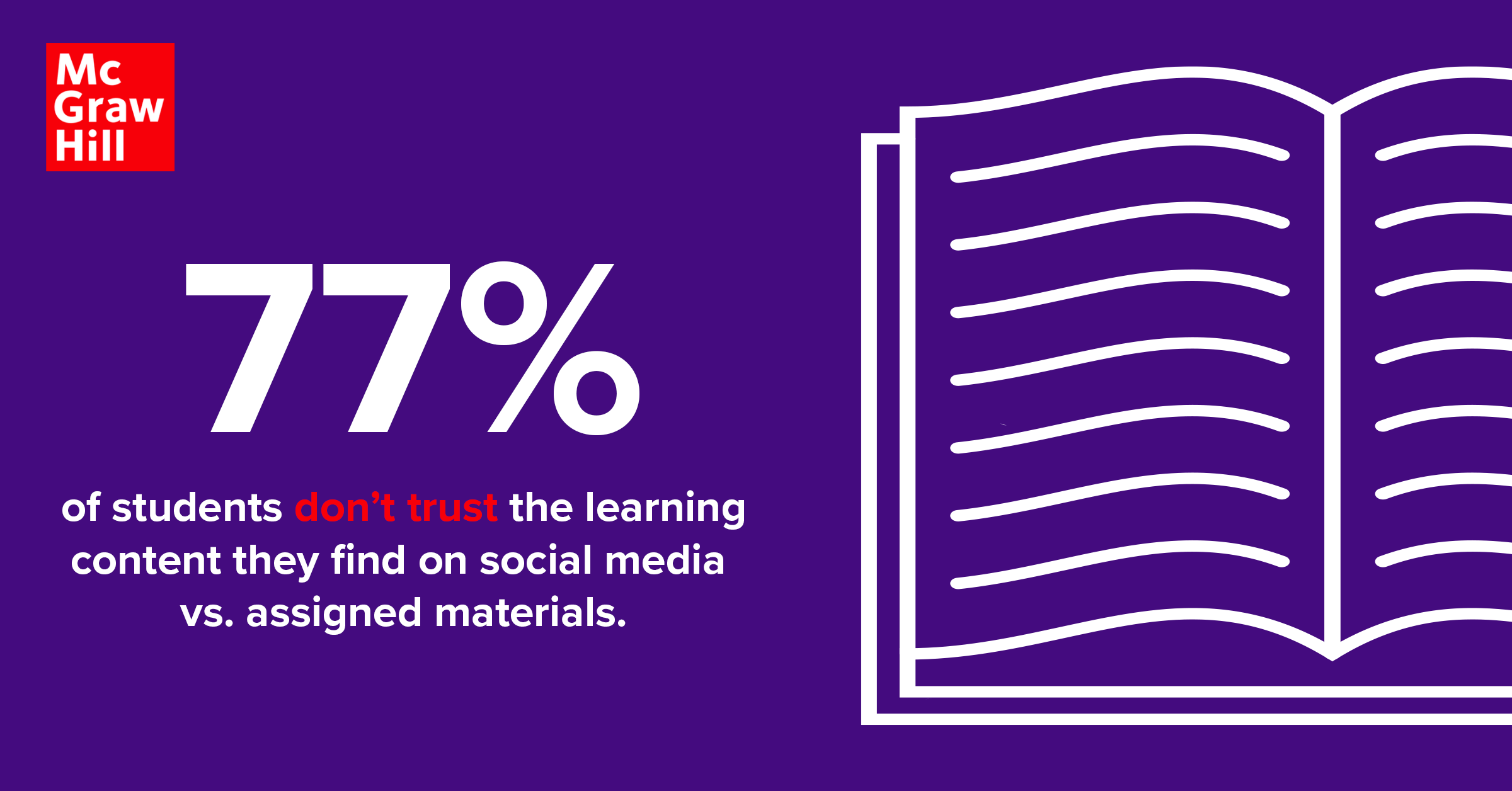My Account Details
How is social media influencing education?
Insights from our latest survey of college students with Morning Consult
The next time you're on a campus, take a look around. Chances are most people will be looking down at a screen. As research repeatedly confirms, 18-29-year-olds are the biggest users of social media. Liking, posting and scrolling has become as much a part of the daily routine as brushing teeth or getting dressed—and it's starting to transform the way students want to study and learn.
What does this shift mean, and how can educators best support students in and out of the classroom? To find out, we partnered with Morning Consult to survey 500 undergraduate students around the country about their school experiences, learning and studying pain points, social media use, and awareness and use of online study apps. The survey was part of our research for the development of SHARPEN, a new mobile app we launched this month that delivers content in social-friendly formats.
Students' answers shed new light on how and where learners want to get their information and ways educators can support them.
Here are five important insights we learned.
1. Social media is a go-to resource for class content.
College students are using social media for more than just checking out funny memes and videos. A majority of survey respondents also turn to these platforms to help find information for class.

2. Social media's format fits into students' busy lives.
Whether they're juggling work or outside demands alongside school, learners are busier than ever. Survey respondents say they appreciate the convenience and engaging format of social media—a two-minute video instead of, say, a five-page article.

3. Video is hands-down the format of choice for many undergraduates.
More than half of students we surveyed say they turn to YouTube when they need help with classwork, with TikTok a distant second.

4. Social media content may be engaging, but students say it's not always credible.
Not all information is created equal. More than three-quarters of survey respondents say they regard information they find on social media with a degree of skepticism.

5. Many students say they'd prefer if trusted learning content were as convenient and engaging as the content they find social media.
Social media content is designed to be easy to access and digest. If those same qualities could be applied to credible learning content, students say they’d be more likely to study and retain the material.
As students' study habits shift, McGraw Hill continues to adapt to meet their changing needs. In fact, that was the inspiration behind our new SHARPEN app, which delivers complimentary learning materials students need in the formats they prefer, such as short videos, continuous content feeds and swipe-able study tools. To learn more, visit www.mheducation.com/sharpen.